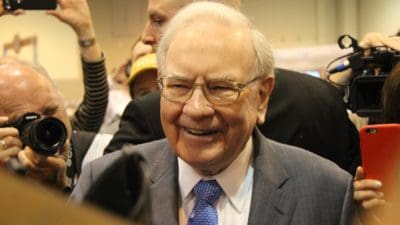Talk of the FTSE 100 reaching the magic 7,000-point marker has been doing the rounds for many months now. But the index finally achieved this feat in late-Friday afternoon trade and recently touched an all-time peak just below 7,025 points.
The FTSE has galloped 7% higher since the turn of the year to today’s highs, and it is 15 months since the 6,000-point barrier was taken out. Given that the technical trend seems to be up, broadly speaking, speculation has already started on when the index will shake hands with the 8,000 marker.
Heed the lesson of recent collapses
But of course such talk can often be washed away in a matter of a few trading sessions, such is the nature of stock market investing. Indeed, the amount of economic headwinds still battering the financial markets — from fears of a potential ‘Grexit’ in the eurozone, to concerns over decelerating Chinese economic growth, and even the result of Britain’s general election in May — has already played havoc with the UK’s premier index over the past year.
Lest we forget the 8% drop punched during the course 10 days back in December, taking the FTSE 100 to its cheapest for some 18 months from around 6,740 points to 6,180. And this followed other eye-watering dips witnessed in September, when the index lost almost 10% during the course of a month, and other heavy falls last spring when it was also flirting around the 6,800 marker.
Once you also throw in other scary macroeconomic and geopolitical factors, from the relentless drive of ISIS across the Middle East through to the prospect of a second Cold War, the possibility of another sharp correction becomes a very real scenario.
Could commodities weakness prompt a crash?
And sceptics over the FTSE’s recent surge would point to the index’s huge reliance on the fossil fuel and mining sectors as potential alarm bells for a possible crash. Undoubtedly Chancellor George Osborne’s plans to grant huge tax breaks to North Sea oil producers has boosted investor sentiment in recent days, and comes on top of signs of reduced US shale rig numbers since the middle of January.
However, the City’s army of brokers are broadly in agreement that black gold prices are likely to remain in the doldrums, as industry cartel OPEC remains committed to pumping and industry experts are in agreement that abundant supply will continue to outpace demand for some time to come. Indeed, this has led many to question whether the strong run of the likes of BP (LSE: BP) — which has risen almost 10% since the turn of the year — can be sustained.
Similar fears have also struck the metals markets, where severe market imbalances could also put the long-term investment appeal of the sector under the microscope. This is particularly the case for those involved in the production of iron ore, prompted by the scale of production ramp-ups introduced by the likes of BHP Billiton (LSE: BLT) and Rio Tinto (LSE: RIO) which are set to keep on rolling. This problem is made all the worse given that the Chinese steelmaking industry continues to toil.
Although market sentiment has been boosted by recent European Central Bank money pumping, not to mention Chancellor Osborne’s Budget giving the British economic recovery another nudge in the right direction, in my opinion the FTSE 100’s bubbly bounce above 7,000 points could prove a short-lived phenomenon given the number — and indeed scale — of problems still to be resolved. Investors should be on red alert for signs of a possible price collapse.







